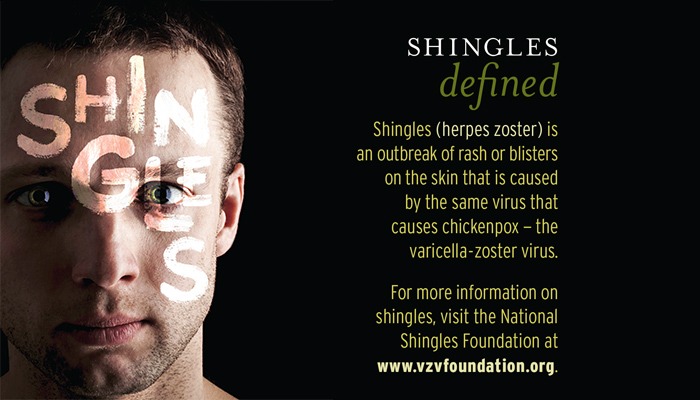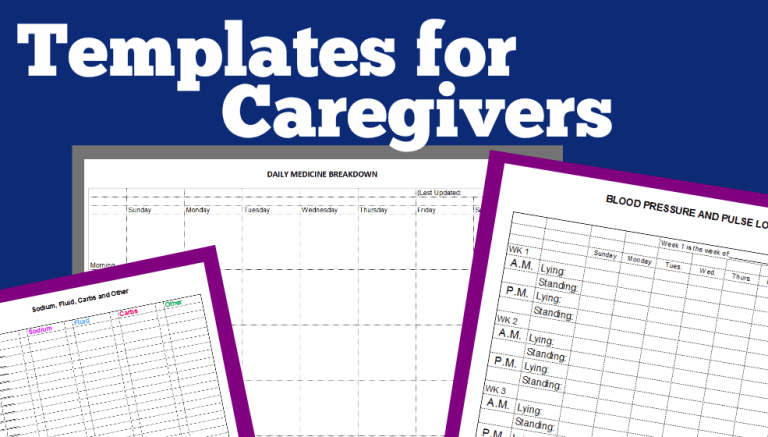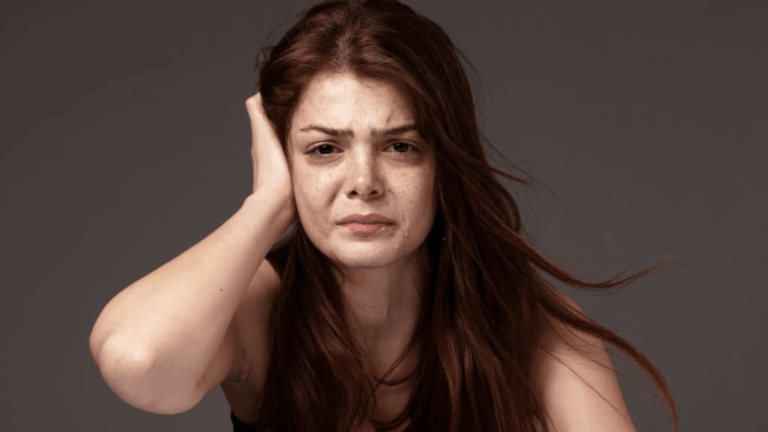Shingles

“It was very uncomfortable to wear a shirt, and between the burning and sharp pain, I was in very bad shape,” Frazee recalls. “The doctor told me that it was shingles and treated me with Valtrex and pain medication. Eight months later, I broke out again with the same symptoms, and I was treated by my general practitioner with the same medications. I never really got rid of the pain from the first episode, and during the next two weeks, I developed a terrible pain across the right side of my stomach where the red bumps had been. After a few visits to my doctor, I was referred to a local pain doctor, and he said I was suffering from post herpetic neuralgia (PHN).”
Shingles, a viral infection caused by the varicella-zoster virus, can occur anywhere on the body, but most often appears as a single strip of blisters that wraps around either the left or right side of the torso. The varicella-zoster virus is the same virus that causes chickenpox, and after an individual has chickenpox, the virus lies inactive in nerve tissue near the spinal cord and brain. Although the exact cause has not been determined, the virus can reactivate years later as shingles, causing pain and, in some cases, long-term complications like PHN.
“Acute herpes zoster, also known as shingles, is associated with acute pain,” explains Charles Argoff, MD, director of the Comprehensive Pain Center of Albany Medical College/Center and professor of neurology at Albany Medical College. “Postherpetic neuralgia refers to the chronic pain that can remain after the shingles outbreak. There are several known risk factors for the development of PHN following shingles. These include those that cannot be modified, such as age (older than 70) and gender (female), as well as those that possibly can be influenced: the severity of rash and severe pain. The factors that can be modified can be addressed by treating with appropriate antiviral agents within 72 hours of the shingles outbreak and managing the pain assertively from the onset of shingles instead of assuming it will go away. The sooner the infection and pain are under control, the better.”
What Shingles Looks Like
A rash is the most common symptom of shingles, but pain, burning, numbness or tingling often precedes the physical signs. The pain’s intensity can also accompany fever and chills, achiness, headache and fatigue, and since some people can experience shingles pain without developing a rash, individuals can mistake the virus for a heart, lung or kidney condition.
After Frazee was diagnosed, effective pain management was not immediate. He tried several medications and treatments in an effort to control his pain from postherpetic neuralgia, but the traditional approaches were unsuccessful.
“After three different intercostals nerve blocks with pain medication, I was not seeing any improvement, and the normal everyday stress from work made me feel worse,” Frazee says.“ I found that stress and any kind of lifting objects caused the pain to escalate, and I had to be careful taking showers because even the water caused it to hurt. At the time, I was playing and coaching softball, so I had to totally stop my recreational activities. I was then referred to Duke Medical, and the doctor there performed a radiofrequency ablation, a procedure used to reduce pain. An electrical current produced by a radio wave is used to heat up a small area of nerve tissue, thereby decreasing pain signals from that specific area. More than 70 percent of patients treated with RFA experience pain relief, but unfortunately, I was not in that 70 percent range.”
Frazee said in time, his hope of finding pain relief began to diminish. In an effort to help, his parents contacted the Car-olinas Pain Institute, in Winston-Salem, North Carolina, where Frazee began a new treatment regimen.
“Over the next couple of years, I had cryoablation injections, nerve blocks and four Qutenza™ treatments,” Frazee explains. “I have been on morphine/MS Contin and Gralise for my nerve pain. I still can’t wear a shirt without having a Lidoderm patch on. Family vacations and social gatherings are still hard to attend due to the constant pain, but the prayer and wonderful support I have from my family — especially my wife, Alison, and my son, Ryan — help me keep a positive attitude.”
As Dr. Argoff explains, “There are no FDA-approved topical treatments for the pain associated with the acute outbreak; however there are two FDA-approved topical treatments for PHN, including the 5% lidocaine patch (Lidoderm) and the 8% capsaicin patch (Qutenza).”
Prevention
Two vaccines can help prevent shingles. The chickenpox (varicella) vaccine is a routine childhood immunization that prevents chickenpox and is also recommended for adults who haven’t had the virus. The shingles vaccine, referred to as varicella-roster, has been approved by the Food and Drug Administration for adults 50 and older and contains a live virus, rendering it inappropriate for people with weakened immune systems.
“I strongly urge everybody 30 and older to really consider the shingle vaccine, because at age 33 I would have never thought I would get it,” continues Frazee. “I was considered very young when I got shingles, and the doctors said that it is very rare for someone my age to get it. It was shortly after I had shingles and developed PHN that they came out with a shingles vaccine.”
The zoster vaccine is still a relatively new addition to the vaccination roster, but Dr. Argoff says it does seem to offer important benefits.
“It is too soon to determine what impact the zoster vaccine has had not only on the incidence of shingles, but also if it has had a significant impact on reducing the number of new instances of PHN,” Dr. Argoff explains. “Nevertheless, the vaccine can not only prevent shingles, but if it does occur in a vaccinated person, it is likely to be milder than if the person had not been vaccinated.”
But for individuals like Frazee who have already developed PHN from a case of shingles, pain is a daily fact of life that creates significant challenges. And consequently, the medical community continues to look for answers.
“I am still in a lot of daily pain,” he says. “Just about anything you can think of makes my shingles nerve pain flare up — taking a shower, waking up from sleeping on my right side, cold weather, hot weather. The doctors think there is a slim possibility that the nerve endings can eventually burn themselves out, causing the pain to stop, but they have been talking to me about a permanent implant that stimulates the nerves in just that area.”
And while the ongoing pain continues to be a challenge for Frazee, he says that he is grateful for the family members and friends who accompany him on his pain journey.
“I’m currently not part of a support group, but I consider my family as my support,” Frazee said. “They’re always able to help whenever I need them.” {PP}
PainPathways Magazine
PainPathways is the first, only and ultimate pain magazine. First published in spring 2008, PainPathways is the culmination of the vision of Richard L. Rauck, MD, to provide a shared resource for people living with and caring for others in pain. This quarterly resource not only provides in-depth information on current treatments, therapies and research studies but also connects people who live with pain, both personally and professionally.
View All By PainPathways






